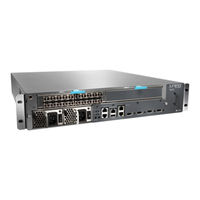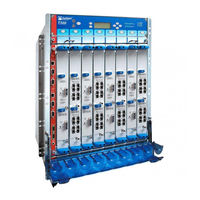Juniper T Series Core Router Manuals
Manuals and User Guides for Juniper T Series Core Router. We have 3 Juniper T Series Core Router manuals available for free PDF download: Monitoring And Troubleshooting Manual, Hardware Manual, Handling Instructions Manual
Juniper T Series Monitoring And Troubleshooting Manual (812 pages)
Brand: Juniper
|
Category: Network Router
|
Size: 24 MB
Table of Contents
-
Objectives39
-
Audience40
-
-
-
-
-
-
Fix the Problem158
-
Contact JTAC159
-
-
-
Routing Engine181
-
-
-
-
-
Replace the Fpc278
-
-
Pics Overview280
-
-
-
-
-
-
-
-
-
-
Scg Overview446
Advertisement
Juniper T Series Hardware Manual (396 pages)
Brand: Juniper
|
Category: Network Router
|
Size: 7 MB
Table of Contents
-
Overview29
-
Data Flow35
-
Airflow53
-
Fan Trays54
-
Air Filters55
-
T320 SIB Leds114
-
Supplies155
-
Lift158
Juniper T Series Handling Instructions Manual (12 pages)
Brand: Juniper
|
Category: Network Router
|
Size: 0 MB
Table of Contents
Advertisement
Advertisement


